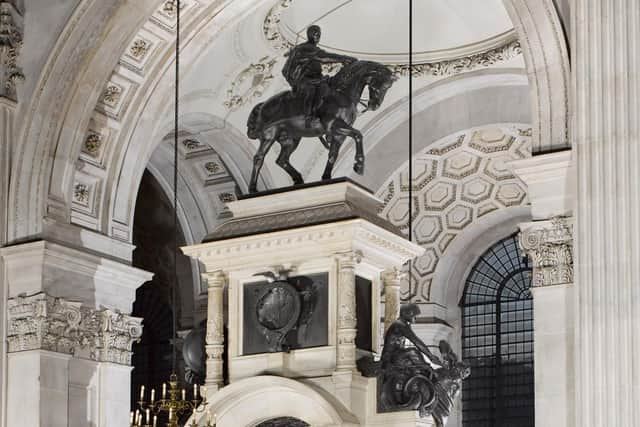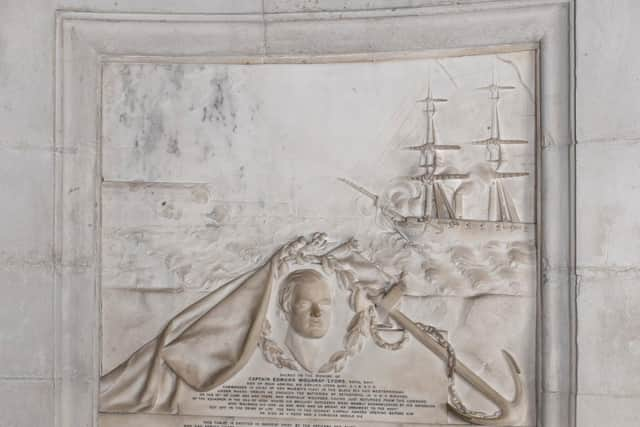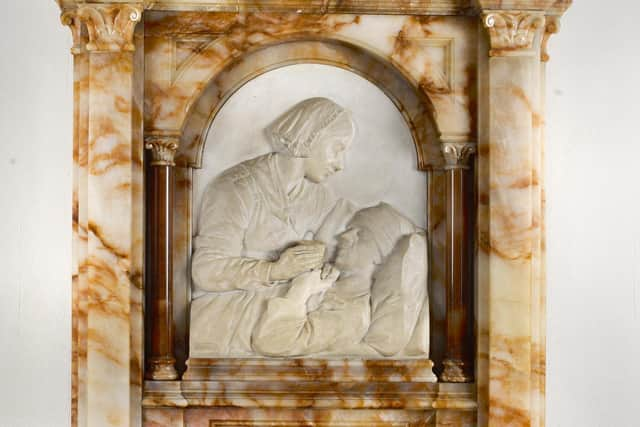Exploring St Paul's old monuments in a new way with 'Voices' project led by University of York
Now, under a major project with the University of York, they are to be brought to public understanding in a new way.
Dubbed 50 Monuments in 50 Voices, the project shares responses to the artefacts from artists, poets, musicians, theologians and academics.
Advertisement
Hide AdAdvertisement
Hide AdThe ambition is to open up interpretation to a wider audience.


Prof Jason Edwards, from the University of York’s Department of History of Art, is leading the project.
He said: “St Paul’s has hundreds of monuments to some of the great wonders of the 19th century – people that the Victorians felt were really important.
“They are beautiful, interesting things, and there is an opportunity to learn about this art as well as the people. People might find it more interesting, and more complicated, than expected.”


Advertisement
Hide AdAdvertisement
Hide AdThe project is curated by Pantheons: Sculpture at St Paul’s Cathedral, c.1796-1916, a UK Research and Innovation-funded collaboration between the London cathedral and the university’s Department of History of Art.
It centres on a digital interpretation of St Paul’s monuments, including memorials to the Duke of Wellington, and polar explorer Captain Robert Falcon Scott.
Among those to share their ‘voices’ on the monuments are poet Imtiaz Dharker, artist Victor Ehikhamenor, musician Adrian Utley of music group Portishead and historian Dr Janina Ramirez.
Each week, for 50 weeks, will focus on a different monument and a different story from a different voice. This week’s focus sees a poem in response to a monument of William Ernest Henley, a poet and writer born in 1849, who was the inspiration for Long John Silver in Robert Louis Stevenson’s Treasure Island.


Advertisement
Hide AdAdvertisement
Hide AdProf Edwards said statues and monuments have increasingly been at the centre of contentious debate in the wake of movements such as Black Lives Matter and Rhodes Must Fall.
Too often, he said, the stories and responses evoked by the people behind each piece can be clouded in 19th century language.
Access
Prof Edwards said: “What these ‘voices’ might do is make these monuments more accessible to people. We are really trying to make these monuments speak to a very diverse audience.
“The only way we can really understand these monuments is to have conversations about them. I really hope it will encourage people to join these conversations.
Advertisement
Hide AdAdvertisement
Hide Ad“That they can share parts of culture, telling us things we didn’t know. People will find things relevant to them, in a way they may find surprising.”
The Dean of St Paul’s Cathedral has claimed a perspective on the past is vital to ensuring society can “live together in the present and look to the future”.
The Very Reverend Dr David Ison, said: “By reading, hearing and experiencing these responses, we hope to better understand the intellectual and emotional responses to these monuments in 21st century Britain.”
To follow each week, see pantheons-st-pauls.york.ac.uk.
____________________________________________________________________
Advertisement
Hide AdAdvertisement
Hide AdSupport The Yorkshire Post and become a subscriber today. Your subscription will help us to continue to bring quality news to the people of Yorkshire. In return, you'll see fewer ads on site, get free access to our app and receive exclusive members-only offers. Click here to subscribe.
